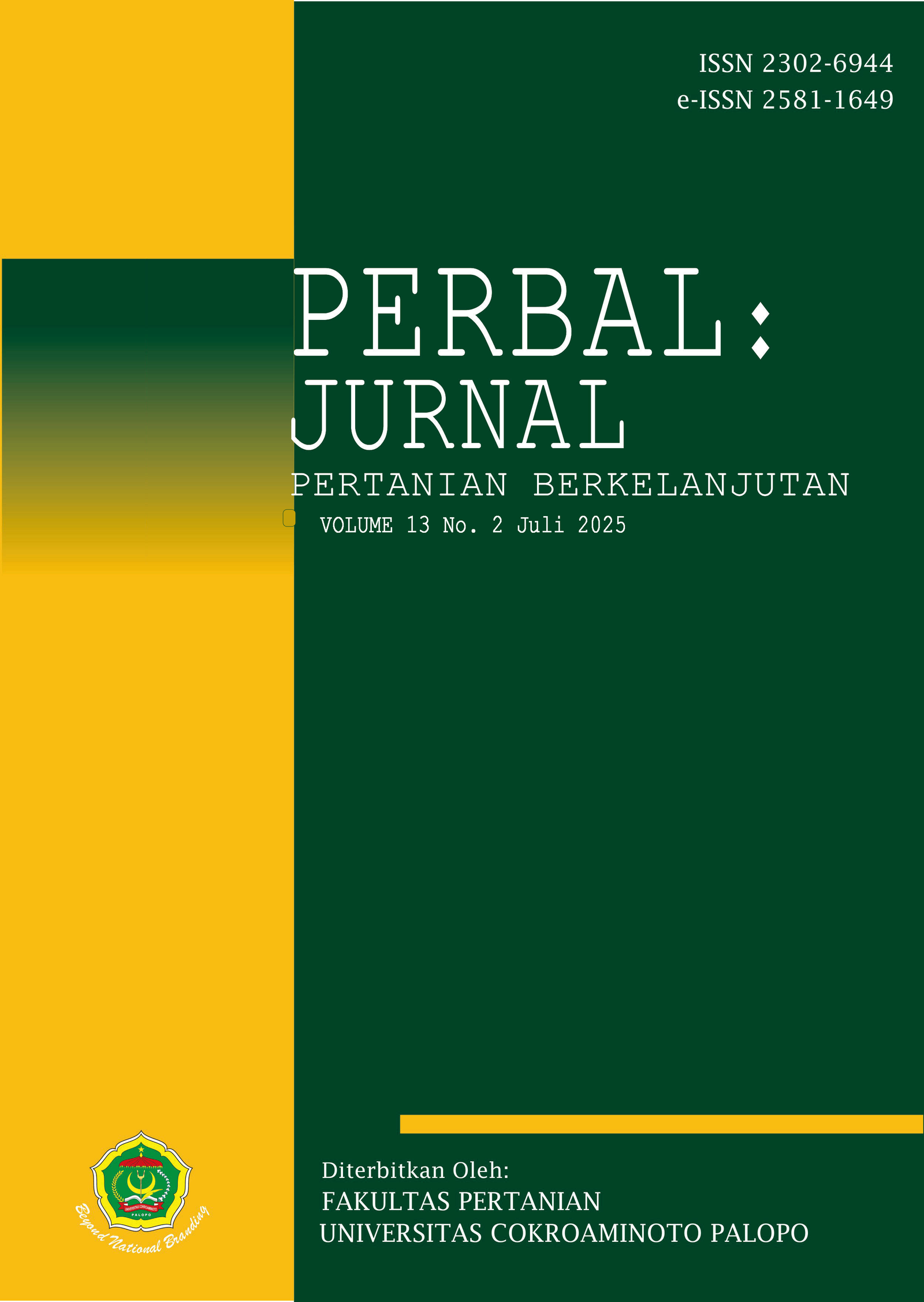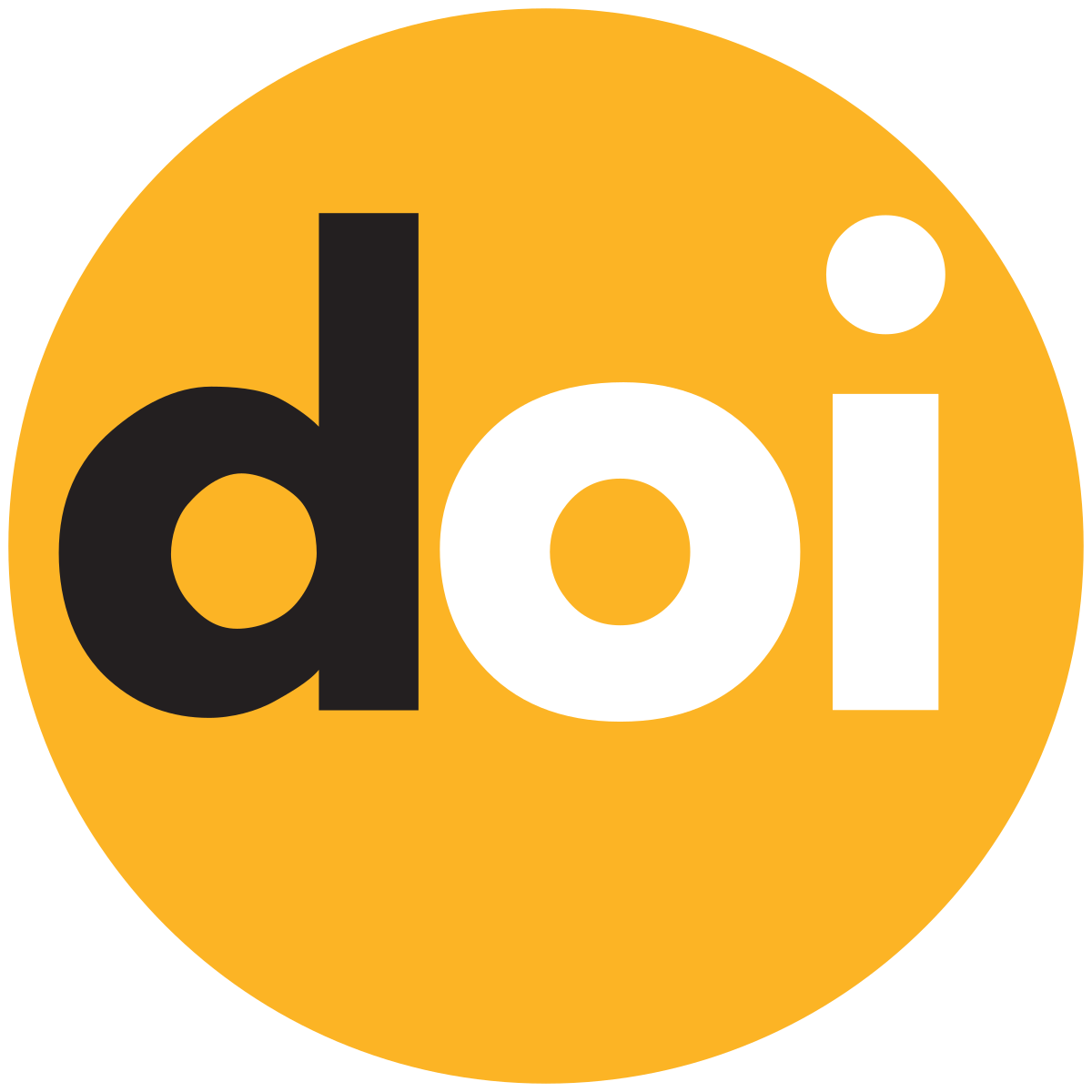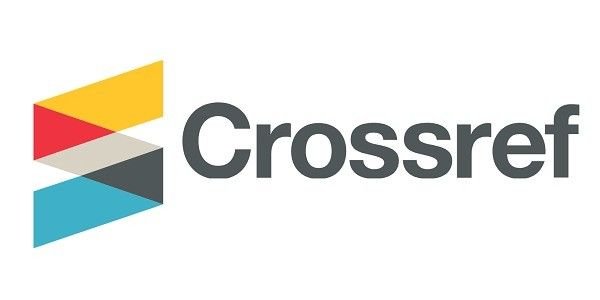Analisis Pengaruh Teknologi Informasi Terhadap Kinerja Penyuluh Pertanian di Kota Palopo
Analysis of the Influence of Information Technology on the Performance of Agricultural Extenders in the Palopo City
DOI:
https://doi.org/10.30605/perbal.v13i2.4752Keywords:
Perangkat keras, perangkat lunak, kinerja, penyuluh pertanianAbstract
Peningkatan produktivitas dan kesejahteraan petani merupakan salah satu peran strategis penyuluh pertanian. Dalam era digital, penyuluh pertanian juga menggunakan teknologi komunikasi seperti pesan teks, email, atau media sosial untuk berkomunikasi dengan petani. Penggunaan teknologi ini memungkinkan penyuluh untuk memberikan informasi, membagikan sumber daya, atau menjawab pertanyaan petani secara efisien dan cepat. Penelitian ini bertujuan menganalisis penguasaan teknologi informasi, menganalisis kinerja penyuluh pertanian lapangan (PPL) serta menganalisis pengaruh penguasaan teknologi informasi terhadap kinerja penyuluh. Dalam penelitian ini populasinya adalah penyuluh pertanian yang berstatus PNS sebanyak 55 orang. Data dianalisis secara deskriptif dan analisis regresi linear berganda. Hasil yang diperoleh pada penelitian ini menunjukkan bahwa 36.36% penyuluh pertanian menguasai perangkat keras, 58.18 penyuluh pertanian cukup menguasai perangkat keras, dan sisanya 5.45% penyuluh pertanian kurang menguasai perangkat keras komputer. Selanjutnya, 40% penyuluh pertanian menguasai perangkat lunak, 54.54% penyuluh pertanian cukup menguasai dan sebesar 5.54% penyuluh pertanian kurang menguasai perangkat lunak. Kinerja penyuluh pertanian kategori baik adalah sebesar 30.91%, kategori cukup baik sebesar 61.82%, kategori kurang baik sebesar 5.45%, dan sisanya sebesar 1.82% memiliki kinerja sangat kurang. Hasil uji regresi linear berganda mengindikasikan bahwa penguasaan perangkat keras (hardware) dan perangkat lunak (software) berpengaruh terhadap kinerja penyuluh pertanian lapangan baik secara parsial maupun secara simultan.
Increasing the productivity and welfare of farmers is one of the strategic roles of agricultural extension workers. In the digital era, agricultural extension workers also use communication technology such as text messages, email, or social media to communicate with farmers. The use of this technology allows extension workers to provide information, share resources, or answer farmer questions efficiently and quickly. This study aims to analyze the mastery of information technology, analyze the performance of agricultural extension workers and analyze the effect of mastery of information technology on the performance of extension workers. In this study, the population was agricultural extension workers with civil servant status as many as 55 people. Data were analyzed descriptively and multiple linear regression analysis. The results obtained in this study indicate that 36.36% of agricultural extension workers mastered hardware, 58.18 agricultural extension workers were quite proficient in hardware, and the remaining 5.45% of agricultural extension workers did not master computer hardware. Furthermore, 40% of agricultural extension workers mastered software, 54.54% of agricultural extension workers were quite proficient and 5.54% of agricultural extension workers did not master software. The performance of agricultural extension workers in the good category is 30.91%, the category is quite good is 61.82%, the category is less good is 5.45%, and the remaining 1.82% have very poor performance. The results of the multiple linear regression test indicate that mastery of hardware and software affects the performance of agricultural extension workers in the field both partially and simultaneously.
Downloads
References
Aprilyanti, S. (2017). Pengaruh usia dan masa kerja terhadap produktivitas kerja (Studi kasus: PT. OASIS water international cabang Palembang). Jurnal Sistem dan Manajemen Industri, 1(2), 68-72. https://doi.org/10.30656/jsmi. v1i2. 413. DOI: https://doi.org/10.30656/jsmi.v1i2.413
Badan Pusat Statistik. (2004). Sulawesi Selatan dalam Angka. BPS Sulawesi Selatan.
Eliyyin, E., Juraemi, J. & Effendi, M. (2022). Kinerja penyuluh pertanian lapangan pada wilayah kerja Balai Penyuluhan Pertanian Jempang, Kabupaten Kutai Barat. Jurnal Agribisnis dan Komunikasi Pertanian (Journal of Agribusiness And Agricultural Communication), 5(1), 13-22. DOI: https://doi.org/10.35941/jakp.5.1.2022.6425.13-22
Faisal, H.N. (2020). Peran penyuluhan pertanian sebagai upaya peningkatan peran kelompok tani (Studi kasus di Kecamatan Kauman Kabupaten Tulungagung). Jurnal Agribisnis Fakultas Pertanian Universitas Tulungagung (Agribis), 6(1), 1 - 13. https://journal.unita.ac.id/index.php/agribisnis/article/view/182.
Iqbal, M. (2015). Regresi Data Panel (2) Tahap Analisis. Blog Dosen Perbanas, 2, 1–7.
KBBI. (2024). Kamus Besar Bahasa Indonesia (KBBI) Online, Diakses Tanggal 22 Mei 2024, Dari https://www.kbbi.web.id/prosedur.
Kementerian Pertanian. (2013). Peraturan Menteri Pertanian Nomor 91/Permentan/OT.140.9/2013 tentang Pedoman Evaluasi Kinerja Penyuluh Pertanian dengan Standar Nilai Prestasi Kerja. Jakarta: Kementerian Pertanian.
Kinasih, T.S., (2021). Kinerja penyuluh pertanian dalam pelaksanaan program komando strategis pembangunan pertanian (Kostratani) di Kabupaten Sragen. Agrica Ekstensia, 15(2), 111-117. DOI: https://doi.org/10.55127/ae.v15i2.98
Moonti, A., Bempah, I., Saleh, Y., & Adam, E. (2022). Penyuluhan pertanian berbasis teknologi informasi di Kabupaten Bone Bolango. Jurnal Ekonomi Pertanian dan Agribisnis, 6(1), 62-78. DOI: https://doi.org/10.21776/ub.jepa.2022.006.01.7
O'brien, J.A. & Marakas, G.M. (2006). Management information systems (Vol. 6). New York, NY, USA: McGraw-Hill Irwin.
Purba, A.A., Tampubolon, A.M., Gaol, R.Y.L., Siregar, I.A. & Hidayat, N., (2024). Mengoptimalkan penduduk usia produktif sebagai aktor utama dalam pembangunan nasional. Jurnal Sosial Humaniora Sigli, 7(1), 460-466.
Purba, R.A., et al., (2020). Aplikasi Teknologi Informasi: Teori dan Implementasi. Medan: Yayasan Kita Menulis.
Putri, N.D., Oktofa, M.A., Rahmadhani, A.A. & Nurbaiti, N., (2023). Pentingnya peranan perangkat keras dalam sistem informasi manajemen. Jurnal Publikasi Sistem Informasi dan Manajemen Bisnis, 2(1), 67-74. DOI: https://doi.org/10.55606/jupsim.v2i1.791
Rainer Jr., R.K., & Cegielski, C.G. (2011). Introduction Information Systems: Supporting and Transforming Business. USA: John Wiley & Sons, Inc http://espace.library.uq.edu.au/
eserv.php?pid=UQ:8169&dsID=n3_Keane_ et_al_T.pdf. Diakses tanggal 28 Juli 2024.
Rosana, A.S. (2010). Kemajuan teknologi informasi dan komunikasi dalam industri media di Indonesia. Gema Eksos, 5(2), 218225.
Rosidah, R. & Arantika, T. (2018). Peran teknologi untuk pengembangan karir sekretaris. Efisiensi: Kajian Ilmu Administrasi, 15(1), 43-50. DOI: https://doi.org/10.21831/efisiensi.v15i1.24485
Rupa, M. (2024). Kinerja penyuluh pertanian: faktor penentu keberlanjutan program pertanian di Indonesia. Penyuluhan & Komunikasi Pembangunan Pertanian, 1(2), 23-35.
Sirajuddin, Z., & Martin, R. (2019). Information and communication technology (ICT) proficiency among extension agents and its impact on the adoption of cyber-extension in Indonesia. Annual Conference of AIAEE: Linking, Innovating, Motivating, and Engaging for Resilient Agricultural Systems, 206–208. AIAEE.
Slamet, Y. (1993). Analisis Kuantitatif untuk Data Sosial. Solo: Debara Publisher.
Sudijono, A. (2010). Pengantar Statistik Pendidikan. Jakarta: PT Raja Grafinda Persada.
Syafruddin, Hariadi, S.S., & Wastutiningsih, S.P. (2013). Kinerja penyuluh pertanian berdasarkan faktor personal dan situasional. Jurnal Psikologi, 40(2), 240–257. https://doi.org/10.22146/ jpsi.6980.
Undang-Undang Nomor 16 Tahun 2006 tentang SP3K. Lembaran Negara RI Tahun 2006 Nomor 92, Tambahan Lembaran Negara RI Nomor 4660. Jakarta: Sekretariat Negara.
Widoyoko, E.P. (2012). Teknik Penyusunan Instrumen Penelitian. Yogyakarta: Pustaka Pelajar.
Downloads
Published
Issue
Section
License
Copyright (c) 2025 Ridoan Ridoan, Taruna S.Arzam, Naima Haruna

This work is licensed under a Creative Commons Attribution 4.0 International License.
In submitting the manuscript to the journal, the authors certify that:
- They are authorized by their co-authors to enter into these arrangements.
- The work described has not been formally published before, except in the form of an abstract or as part of a published lecture, review, thesis, or overlay journal.
- That it is not under consideration for publication elsewhere,
- That its publication has been approved by all the author(s) and by the responsible authorities – tacitly or explicitly – of the institutes where the work has been carried out.
- They secure the right to reproduce any material that has already been published or copyrighted elsewhere.
- They agree to the following license and copyright agreement.
License and Copyright Agreement
Authors who publish with Onoma Journal: Education, Languages??, and Literature agree to the following terms:
- Authors retain copyright and grant the journal right of first publication with the work simultaneously licensed under Creative Commons Attribution License (CC BY 4.0) that allows others to share the work with an acknowledgment of the work's authorship and initial publication in this journal.
- Authors are able to enter into separate, additional contractual arrangements for the non-exclusive distribution of the journal's published version of the work (e.g., post it to an institutional repository or publish it in a book), with an acknowledgment of its initial publication in this journal.
- Authors are permitted and encouraged to post their work online (e.g., in institutional repositories or on their website) prior to and during the submission process, as it can lead to productive exchanges, as well as earlier and greater citation of published work.














